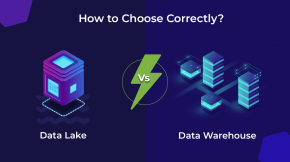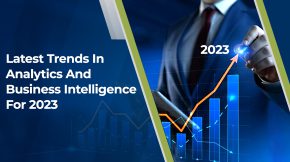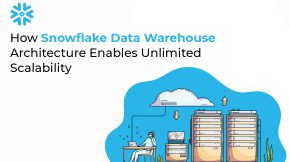How HR analytics can be important for your industry.
As an HR professional, managers tend to collect vast amounts of data. Unfortunately, this data often remains unused. Once they start to analyze human resource challenges by using this data, they are engaged in HR data analytics.
What is HR analytics?
HR analytics, also referred to as people analytics, workforce analytics, or talent analytics, involves gathering, analyzing, and reporting HR data. It enables your organization to measure the impact of a range of HR metrics on overall business performance and make decisions based on data. In other words, HR analytics is a data-driven approach toward Human Resources Management. By using HR analytics, you can improve on your decisions that impact HR functions.
How is HR Analytics Useful?
To be successful and gain a competitive edge, an organization and its department must keep improving in the ways they function. Embracing digitization and business intelligence is one of the key components which can help the organization improve in its day-to-day functions. And it is true for every department of the organization including Human resources.
HR analytics provides HR directors with the data they need to optimize HR functions and employee satisfaction. With the constant flood of technological advances threatening the workplace, it’s more important than ever to manage people intelligently and assist them throughout their demanding employment lifespan. Enhancing HR strategy using HR analytics can improve work satisfaction and result in a healthy business culture with engaged employees.
HR analytics can help human resource people in some of the ways like:
1. Establish a current performance baseline so that the HR professional knows where their company sits on the metrics that are most relevant to them.
2. Make observations and draw inferences from this benchmark to come up with hypotheses about possible solutions to the problems you’re facing.
3. Implement a process change that is specially designed to evaluate the hypothesis’s validity.
4. Monitor the results so that the change’s influence may be assessed, understood, or reversed.
HR Analytics use case
Problem statement:
A large enterprise came to us. They wanted to streamline the people management in the organization to view and forecast the attrition/termination rate of the organization. So that the HR group could preplan a future goal for hiring in the coming quarters.
Solution:
We recommended implementing an end-to-end HR analytics and reporting solution – built on Microsoft Power BI – to help HR across the business discover useful insights for strategic decision-making. It should also enable HR professionals to make data-driven decisions to attract, manage, and retain employees, which improves ROI and helps leaders make decisions to create better work environments and maximize employee productivity. The solution had a major impact on the bottom line when HR team members used it effectively. The solution allows capturing data from any source such as Payday, Keka, Workday, ADP, Oracle HCM, SAP Success Factor, Dynamics 365 Human Resources, and many more with possible integrations.
We have leveraged the default AI – ML and forecasting feature of Power BI. We prepared and trained the data into binary, classification, and regression models to create the insights of the predictive report to do further analysis of attrition rate prediction for the client.
Benefit:
- Prediction reports assist HR team members in setting future people management goals for the company.
- We also focused on making navigation on the multiple pages of various reports as simple as possible, with the necessary tooltips. These tool instructions make it very simple for users to figure out how to apply a specific image for comprehension.
- In addition, the client’s whole HR team was given a secure platform to have genuine access to the report. Distinct teams needed to perceive the data in their way, thus the visualizations had to be different. For example, some are from the Talent team, while others are from Finance, and they each had access to the report. This aided the organization’s data integrity by ensuring data consistency between HR and other departments.
Key KPIs and dashboards in HR analytics
There can be several HR metrics or KPIs in the HR department of every organization. It usually depends on the HR functioning of the company or sometimes the company culture also.
Some stakeholders are interested to see the attrition rate in their company while others may be interested to see employee happiness or satisfaction as the key KPI. It all depends on how you see the results of your HR analytics.
Another important way to see your data is how your raw data is being captured in your HRMS system. What are the labels or the fields in which your raw data is being saved? One of the important jobs of a BI solution is making your disparate sources show uniform data.
Let us see what are the Key KPIs or metrics and dashboards are commonly tracked in a basic HR analytics solution.
1. Hiring Time Period.
The average time it takes you to hire a new employee, from the time you advertise a job to the time they accept an offer of employment. You can figure it out by adding up the time spent on each new employee and dividing it by the number of recruits in a given time period.
2. Average and Total Hiring Cost.
What is the cost to hire a new employee for your company? This includes costs such as the recruiter’s time, the cost of posting a job on a third-party site, interviewing time, and so on.
3. Employee turnover rate.
Every company desires a low staff turnover rate. There could be a problem with your hiring or staffing procedure if you’re constantly losing employees and having to hire new ones. Keep a close eye on this number.
4. Absenteeism.
The amount of time your employees are absent from work for whatever cause is referred to as absenteeism (vacation, sick days, other). Absenteeism metrics are expressed as a percentage of total available working days.
5. Earnings or Revenue per employee.
It’s simple to calculate your revenue per employee. Simply divide the entire income of that company for the year by the number of employees you have. This statistic can also be used for individual departments.
6. Employee engagement.
It is one of the most difficult metrics to track because there is no measure to score it. You can send out business-wide questionnaires to your staff, asking them to score their experience working for the company on a scale of one to five. The average of the data can be used to determine your degree of employee engagement.
There is a huge list of several KPIs which are important in some or another way to the Human resources team.
Predictive Analytics and Forecasting In HR
The use of Predictive analytics gained its place long back but recently it has become a popular and kind of mandatory analytical metric. Specific insights on what to expect in the future are a tremendous competitive advantage for organizations, and HR can leverage this technology to transform the business impact of the function drastically. HR analytics have an equal impact on the Human resource team, employees, and stakeholders.
There are several use cases of Predictive analytics in HR but companies might find some of them applicable in their way. Some of the uses cases can be:
1. To determine attrition rate: if an HR team wants to determine the rate of attrition for the next two fiscal years, it can leverage predictive analytics to identify the future turnover rate based on historical patterns within existing data. Using these insights, HR can then proactively engage and retain employees and reduce turnover.
2. To Bridge skill gap: A predictive analytics algorithm can assist discover the skills gaps in the business using historical data. It can assist corporate owners in determining whether to hire new employees or upskill existing ones. Business leaders can correctly assess which personnel demand the greatest attention in terms of skill development, as well as which areas require improvement.
3. To improve employee productivity: Predictive analytics can be used to maximize a candidate’s role within the organization. Data can be evaluated to assess an employee’s performance by keeping track of tasks, particularly those that are difficult for them to complete. This can assist the employee to improve in the areas where he or she is lacking. Training and counseling sessions can then be scheduled to help the person improve their performance and, as a result, their productivity.
4. To retain top talent: Evaluation of the top performers can be easily done through performance indicators and statistics. Later, with the help of predictive analytics, Factors such as pay packages in other organizations for similar job profiles, additional incentives offered, and growth opportunities at other organizations need to be evaluated. Thus, human resources managers can come up with a contingency plan that might prevent the top employees from leaving the workplace.
Final Thoughts!
HR analytics helps you fully understand what is currently happening and what is required to keep the business operations running smoothly. HR professionals who want to succeed in today’s competitive digital world must be able to learn fast and adapt to the changing business trends. And HR analytics enables them to prepare for entry into this digital world.
At Beyond Key, we have developed Power BI dashboards that cover all the major KPIs related to HR analytics. These dashboards can take up data from any of your sources (HRMS tool or any CRM or ERP) and using this data- Power BI dashboards can be prepared. Making data-driven decisions is possible with these dashboards. Simply connect with us to get a Free demo of our Power Bi dashboards for HR analytics today.












